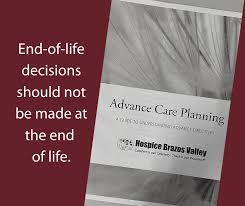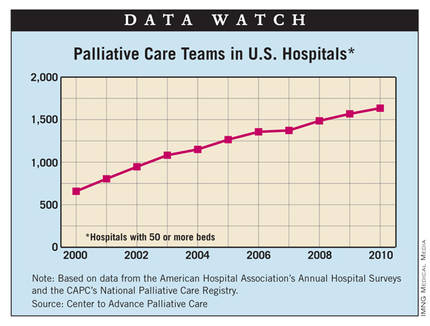
Medicaid is the best way to cover long-term care. You should research Medicaid for the details about how it pays for care. It is important to compare coverage options and shop around. Understanding the role of Medicaid in paying for long term care insurance is essential before purchasing. Be sure to get the right coverage and not only what you think is necessary. While long term care insurance is a great way to protect yourself from a major financial blow, it does not guarantee full coverage.
Costs
Prices for long-term health insurance differ depending on the age of the person and their gender. The average 55-year-old male will pay $1,092 a year for a policy, while a 65-year-old female will pay around $158 per month. The American Association for Long-Term Care Insurance published a 2022 price index. A couple could expect to pay $280 per year for two policies that have a total value of $168,000.50 at 85.
The cost of long term care insurance varies depending on geographical location, care level, and company. Genworth has a cost estimator that will help you find the median cost for different regions of the country. Knowing the average cost in advance will help you plan accordingly. Medicaid and reverse mortgages are available to help you pay for long-term care. If you are worried about your finances, this may be an option.

The coverage
Although regular health insurance plans don't cover long-term care, Medicare Advantage is offered by the federal government. These plans cover Medicare benefits plus extra benefits such as dental care, hearing aids, vision care, and gym memberships. Medicare Advantage plans started offering long-term care services in 2019. They may be expanding coverage in 2020. Adult day care, non emergency transportation, and home modifications are some other benefits. If you do not qualify for Medicare's LTC, you might have to pay for them yourself or apply to a need-based benefit.
Medicare was originally created to provide healthcare for the elderly and disabled. The statute however did not include custodial, which is help with ADLs, such as bathing or eating. The Federal-State Medicaid program supports people with LTC but cannot prevent financial catastrophes caused by an extensive need. LTC services can be expensive and often not accessible to the majority of people. It is therefore crucial that you identify LTC coverage.
Optional
Original Medicare does NOT cover long-term nursing, but Medicare Advantage is gradually adding coverage. There are many private options to pay for long-term healthcare, including long term care insurance, government aid, hybrid policies, which combine both life insurance coverage and long-term support. The extent of your coverage will depend on your situation and the quality of care you require. To determine what your options are, contact your Medicare plan provider.
Medicare Advantage plans can provide additional benefits like nursing home and hospice care. The coverage provided by a Medicare Advantage plan might only cover a limited amount of care. Medicaid is a popular option for long term care insurance coverage. However eligibility requirements vary from one state to the next. Medicaid eligibility is usually extended to people earning up 138% of the federal poverty line, but not all qualify for this coverage.

Medicaid's role paying for long-term health care
While Medicare is a major source of funding for long-term care, it is not the sole source. Private insurance plans often cover part of the long-term care expenses. Medicaid's waiver program may be able to pay for your care if you do not have any private insurance. However, you must meet certain requirements. This may involve spending down assets to meet financial obligations. These are just a few of the benefits that Medicaid waivers offer.
First, Medicaid pays room and board to beneficiaries who receive home-based care. Medicaid will pay for room and board in an institutional if you earn less than the amount required to cover the care costs. Medicaid may penalize those who sell their homes for less than fair market value. They can also take away long-term support assistance. However, it does cover the cost of care in institutions.
FAQ
What are the three main objectives of a healthcare program?
Three of the most important goals for a healthcare system are to provide quality care at a reasonable cost, improve health outcomes, reduce costs, and help patients.
These goals have been incorporated into a framework known as Triple Aim. It is based on research by the Institute of Healthcare Improvement (IHI). IHI published this in 2008.
This framework is designed to help us improve our goals by focusing on all three.
This is because they aren't competing against one another. They support each other.
As an example, if access to care is improved, fewer people die from inability to pay. This helps to lower the overall cost of healthcare.
Also, improving the quality of care helps us reach our first goal - to provide affordable care for patients. It also improves the outcomes.
What's the difference between public health and health policy?
In this context, the terms refer both to the decisions made and those of legislators by policymakers. These policies affect how we deliver healthcare services. For example, the decision to build a new hospital may be decided locally, regionally, or nationally. Similarly, the decision about whether to require employers to offer health insurance may be made by local, regional or national officials.
Why do we have to have medical systems?
People living in developing countries often lack basic health care facilities. Many people in these areas die before reaching middle age due to infectious diseases like malaria and tuberculosis.
Most people in developed countries have routine checkups. They also visit their general practitioners to treat minor ailments. But, many people still have chronic illnesses such as heart disease or diabetes.
What does "public" mean in public health?
Public Health is about protecting and improving the health in the community. Public health is the prevention of disease, injury, disability, promotion of good health, adequate nutrition, and control over communicable and environmental hazards as well behavioral risks.
What are medical systems?
Medical systems were designed to make people live longer and more healthy lives. They ensure patients receive the best medical care, when and where they need it.
They ensure that the right treatment is given at the correct time. They also give information that allows doctors to provide the best possible advice to each patient.
Statistics
- For the most part, that's true—over 80 percent of patients are over the age of 65. (rasmussen.edu)
- Over the first twenty-five years of this transformation, government contributions to healthcare expenditures have dropped from 36% to 15%, with the burden of managing this decrease falling largely on patients. (en.wikipedia.org)
- About 14 percent of Americans have chronic kidney disease. (rasmussen.edu)
- Price Increases, Aging Push Sector To 20 Percent Of Economy". (en.wikipedia.org)
- The health share of the Gross domestic product (GDP) is expected to continue its upward trend, reaching 19.9 percent of GDP by 2025. (en.wikipedia.org)
External Links
How To
What are the four Health Systems?
The healthcare system is a complex network of organizations such as hospitals, clinics, pharmaceutical companies, insurance providers, government agencies, public health officials, and many others.
This infographic was created to help people understand the US healthcare system.
Here are some key points.
-
Annual healthcare spending totals $2 trillion and represents 17% GDP. That's almost twice the size of the entire defense budget!
-
In 2015, medical inflation reached 6.6%, which is higher than any other consumer category.
-
Americans spend an average of 9% on their health costs.
-
In 2014, over 300 million Americans were uninsured.
-
Although the Affordable Care act (ACA) was signed into law, its implementation is still not complete. There are still significant gaps in coverage.
-
The majority of Americans think that the ACA needs to be improved.
-
The US spends more than any other nation on healthcare.
-
Affordable healthcare would mean that every American has access to it. The annual cost would be $2.8 trillion.
-
Medicare, Medicaid, and private insurers cover 56% of all healthcare spending.
-
The top 3 reasons why people don't get insured include not being able to afford it ($25 billion), not having enough time to look for insurance ($16.4 billion), and not knowing about it ($14.7 billion).
-
There are two types, HMO (health maintenance organization), and PPO (preferred providers organization).
-
Private insurance covers the majority of services including doctors, dentists and prescriptions.
-
Programs that are public include outpatient surgery, hospitalization, nursing homes, long-term and preventive care.
-
Medicare is a federal program that provides health coverage to senior citizens. It covers hospital stays, skilled nursing facility stay, and home healthcare visits.
-
Medicaid is a joint federal-state program that provides financial assistance for low-income individuals or families who earn too little to qualify for other benefits.